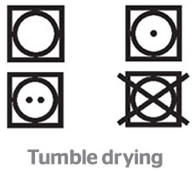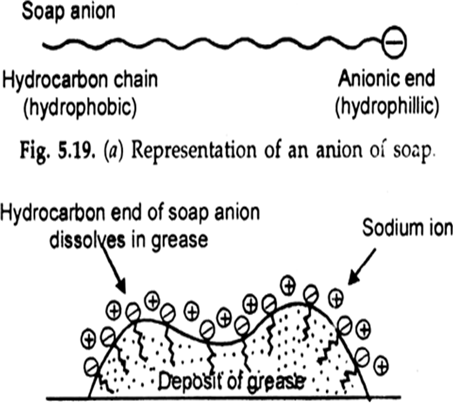Home Science Chapter 21 Care, Maintenance And Storage Of Clothes
Sponsor Area
NCERT Solution For Class 12 Home+science Home Science
Draw suitable symbols for the care label of a dress that indicates that it should not be ‘tumble dried’ and should be ‘ironed at low heat’ .
(i) It should not be tumble dried.
(ii) It should be ironed at low heat.
Mention any two indicators by which you will know the dress has been cut along the selvedge.
Indicators by which we know that the dress has been cut along the selvedge.
- Good drape
- Garment hangs well
- Stretches widthwise
- Comfortable to wear
- Printed company name will be seen right along the selvedge.
You plan to buy a durable fabric of a reputed brand from a reputed shop. What four features of the fabric you need to check to ensure its durability?
(i) It should have a dense weave.
(ii) The fabric of blended fibre is more durable.
(iii) It should not get torn easily.
(iv) It should have a high thread count.
While designing a dress for an infant, what four features you would definitely keep in mind?
(i) Skin clothes should be a soft material so that it does not make any rashes or itching on the skin.
(ii) Clothes should be comfortable.
(iii) Use Elastic should not be tight.
(iv) Extra allowance at hem and seams.
Reena removed stains from her dress before finally storing it in the box After three months she was shocked to see patches and holes in it. State four things she did wrong in each case i.e. while removing stains and in storing the dress.
- She must have washed the cloth with hot boiling water.
- She must have kept it moist.
- She must not have put talcum powder on the stain before washing.
- she must not have used a proper stain remover.
- She must have kept the cloth without proper folding.
- She must have not use insecticide in the almirah.
- She must have put some other dirty clothes along in the almirah.
- She must have not used mothballs.
Draw suitable symbols for a care label of a dress to indicate that it should be tumble dried and not to be bleached.
(i) It should not be tumble dried..
(ii) It should not be bleached.![]()
Mention any two indicators by which you will know the dress has not been cut along the selvedge.
- Dress hangs unevenly
- Does not stretch widthwise
- Printed company name will not be seen.
Other than buying fabric from a reputed shop and of a reputed brand, what four features would you check in the fabric, to ensure its good quality?
Features to check in fabric to ensure its quality:
- It should be stain resistant.
- High thread count
- Mercerized /sanforized finish
- Warp and weft yarns are along the grain
- Uniform yarns
- Uniform prints/not faded
After three months , when Reena took out her dress from the storage she found patches and holes in it. She was surprised to see the damage because she had removed the stains before storing it. Explain in detail eight probable reasons that might have caused this damage.
Stain removal
- She used wrong chemicals.
- She used wrong procedure.
- Did not rinse all traces of chemicals.
Storing
- Did not remove starch/ gum
- Did not wash them before storing
- Did not dry completely /did not keep them in dry place
- Did not spray boxes with insecticide
- Did not remove all pins before storing
- Did not line storage box with newspapers.
List two main ingredients which are used for making a detergent. Write in detail how they help to remove dirt from clothes. Comment on cleaning quality of the soap/ detergent you are using to wash your clothesat home. In your opinion, what is the reason for your satisfaction/ dissatisfaction.
Detergents contain:
- long chain hydrocarbon from petroleum.
- Sulphuric acid
- Sodium hydroxide
- Surfactants
- Foaming agents
- Optical bleaches.
The process of removing dirt:
The cleansing action of soap is due to emulsification and micelle formation. Soaps are sodium salts of higher fatty acids such as sodium stearate, C17H35COO–Na+, which ionises as
The anionic head of stearate ion (—COO–) is hydrophobic in nature and has a great affinity for water, while the hydrocarbon part (C17H35) is hydrophobic in nature and great affinity for oil grease etc.
When soap is added to water containing dirt, the soap molecules surround to dirt particles in such a manner that their hydrophobic parts attached to the dirt molecules and the hydrophilic parts point away from the dirt molecule.
This is known as micelle formation thus we can say that the polar group dissolves in water while the non-polar group dissolves in the dirt particles. Now these micelles are negatively charged they do not coalesce and a stable emulsion is formed.
| Soaps | Detergents |
| Cleansing quality of soap is dissatisfactory. | Cleaning quality of detergent is satisfactory. |
| Soap is not effective in cold water | Detergent dissolves in cold and hot water. |
| More water is required for rinsing. | Less water is required for rinsing |
Neha has some grease and coffee stains on her cotton dress. Suggest her one suitable chemical each which will help her to remove the stains. Also, tell her important precautions she should take while removing these stains. Name one more stain each for which these two chemicals can be used.
Chemical for coffee stains-
- A chemical which will help her to remove the coffee stains is borax.
- Borax can also use to remove tea stain.
Chemical for grease stain-
- A chemical which will help her to remove the grease stain is a methylated spirit or any other organic solvent such as petrol or kerosene.
- Methylated spirit can also use to remove lipstick stain or ball pen ink stain.
Precautions for removing stains
- Choose the right chemical and right amount as per the stain and fabric
- Before using chemical on the fabric, it is a good idea to test the chemical in a hidden corner of the fabric.
- Always use diluted chemical and repeat if necessary.
- Work in a circular motion starting from outer towards the centre.
- Neutralize chemical with appropriate reagents.
- Rinse all traces of chemicals immediately after removing the stains.
State two reasons to justify the price of a costly fabric.
Price of a fabric depends on the -
- The width of the fabric, more width more expensive.
- Quality of fabric, more the better quality more expensive.
Your school dress shirt is white and got stained with oil poured out from your tiffin box. How will you remove it.
(i) Use any absorbent like paper/ chalk/ powder to absorb oil.
(ii) Lay the garment flat so the stain is facing up. Cover the stain with baking soda, cornstarch or baby powder. The powder on the stain for at least an hour to allow it time to work.
(iii) Brush away the powder into the trash.
(iv) Cover the stain with a liquid laundry detergent and soak for at least 15 minutes.
(v) Wash it with hot water.
You have store properly woollen and silk clothes as these are no more suitable to wear due to nature of weather. Suggest four points to store for each of them.
| silk | woollen |
| Hang silk clothing on a padded hanger. Some wood or metal hangers can damage the silk. | Clean wool clothing before storage. |
| Keep plenty of space in between items, allowing the natural fabric to breath. | Insects prefer to feed on wool fibres soiled with perspiration, urine body oils or food particles. Following the care instruction on the labels, dry clean or machine wash your clothing items before packing them up. |
| Store silk clothing in a dark cool closet that does not allow in any light. Light can damage and discolour silk. | Place clean, completely dry wool clothing in airtight containers. Seal any hole or cracks in containers with duct tape. The newspaper is also good as the ink of the newspaper kills the insects. |
| Put mothballs, cedar blocks or lavender in the storage area to keep moths away from silk clothing. | Place mothballs or moth crystals inside the storage container. |
| Store the silk clothing after a wash or dry clean. | Find a cold location within your home or store the container in an unheated garage or shed. |
| Perspiration, stain or other types of dirt and grime can damage or ruin the silk. | Check on your stored clothing periodically. |
Sponsor Area
Mock Test Series
Sponsor Area
Sponsor Area








